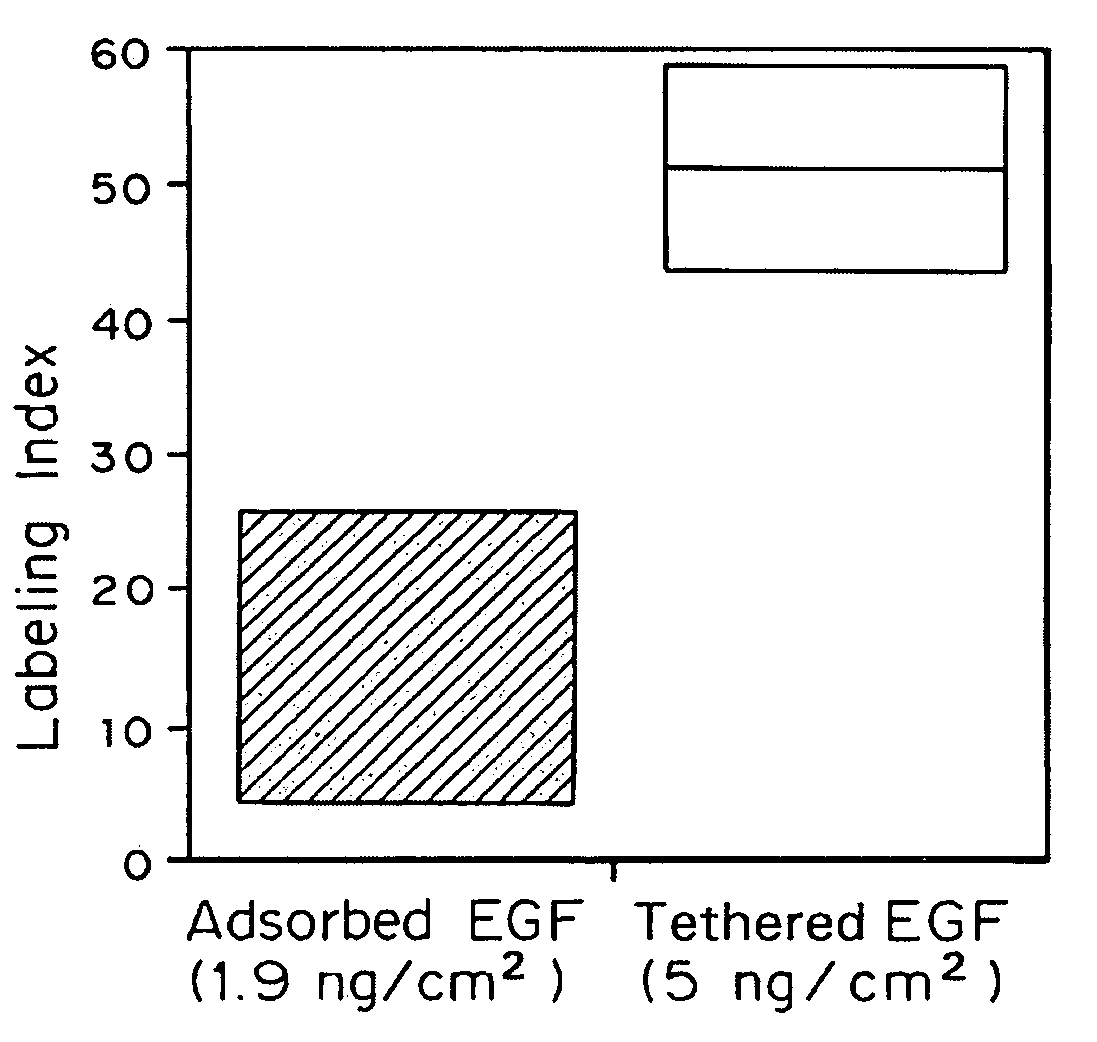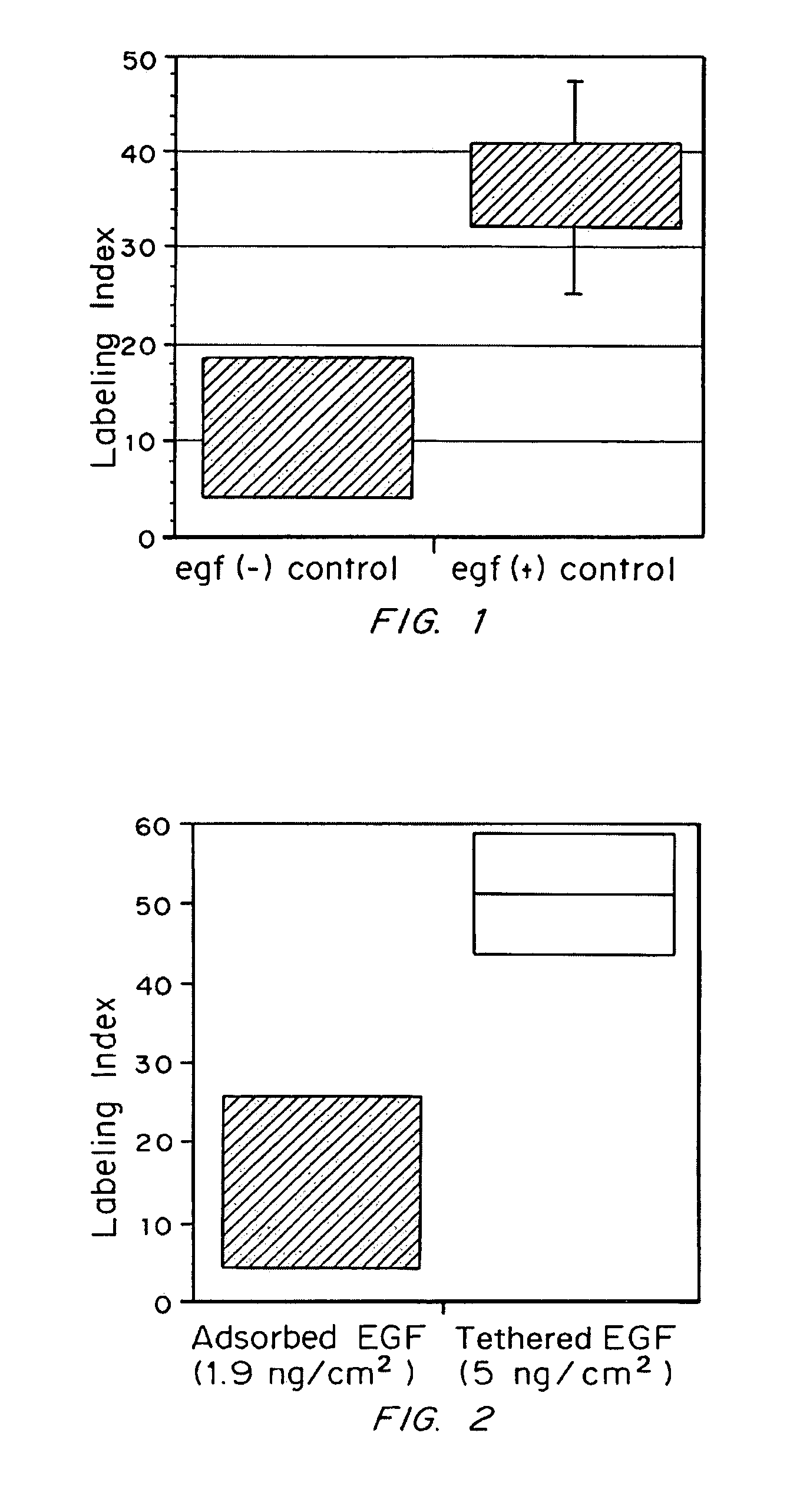Cell growth substrates with tethered cell growth effector molecules
a technology of effector molecules and growth substrates, applied in the direction of peptides, enzymology, prosthesis, etc., can solve the problems of loss of effect, dedifferentiation of specialized cells plated on standard tissue culture plastic dishes, failure to proliferate, etc., to prevent loss of effect
- Summary
- Abstract
- Description
- Claims
- Application Information
AI Technical Summary
Benefits of technology
Problems solved by technology
Method used
Image
Examples
example 1
Enhancement of Cell Growth
Cell Growth and Cell Growth Assessment Methods
[0057]A. In Vitro Hepatocyte Culture System.
[0058]Rat hepatocytes were prepared according to Cima et al., Biotechnology and Bioengineering 38: 145–158 (1991). Briefly, rat livers were perfused with calcium-free perfusion buffer followed by perfusion buffer with CaCl2 and collagenase until the livers became soft. Cells were dispersed in William's Medium E supplemented with 10 ng / mL EGF (Collaborative Research), 20 mM pyruvate (Gibco), 5 nM dexamethasone (Sigma), 20 mU / mL insulin (Gibco), 100 U / mL Penicillin / Streptomycin (Gibco). Cells were grown in culture generally as described by Cima et al. (1991). Briefly, cells were plated in culture medium at a concentration of 3×104 viable cells per square centimeter of culture surface area. Following attachment, the medium was changed to remove unattached cells and then cells were maintained in medium with daily medium changes. The base culture medium for growth on tether...
PUM
| Property | Measurement | Unit |
|---|---|---|
| Composition | aaaaa | aaaaa |
| Flexibility | aaaaa | aaaaa |
| Shape | aaaaa | aaaaa |
Abstract
Description
Claims
Application Information
 Login to View More
Login to View More - R&D
- Intellectual Property
- Life Sciences
- Materials
- Tech Scout
- Unparalleled Data Quality
- Higher Quality Content
- 60% Fewer Hallucinations
Browse by: Latest US Patents, China's latest patents, Technical Efficacy Thesaurus, Application Domain, Technology Topic, Popular Technical Reports.
© 2025 PatSnap. All rights reserved.Legal|Privacy policy|Modern Slavery Act Transparency Statement|Sitemap|About US| Contact US: help@patsnap.com


